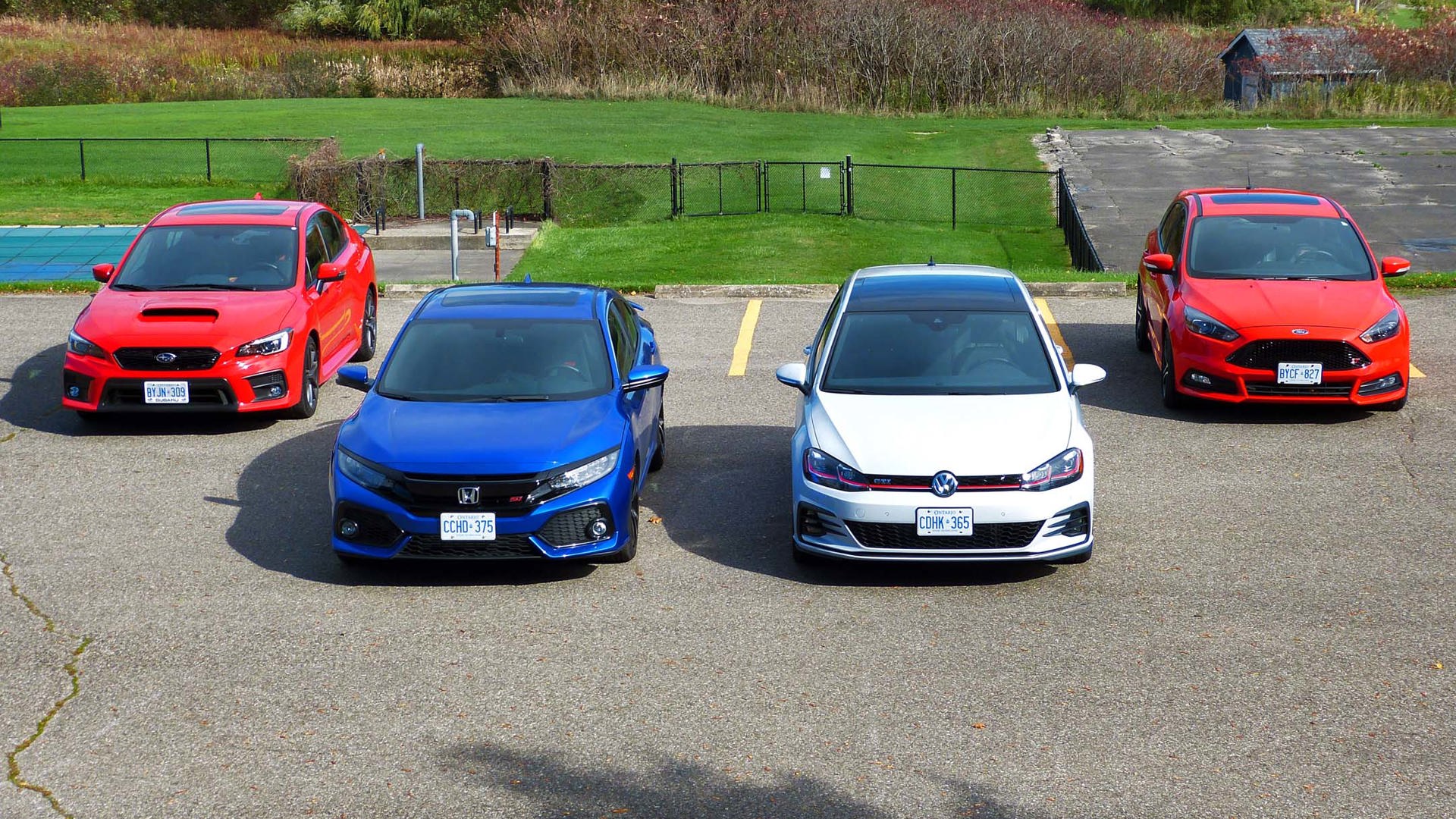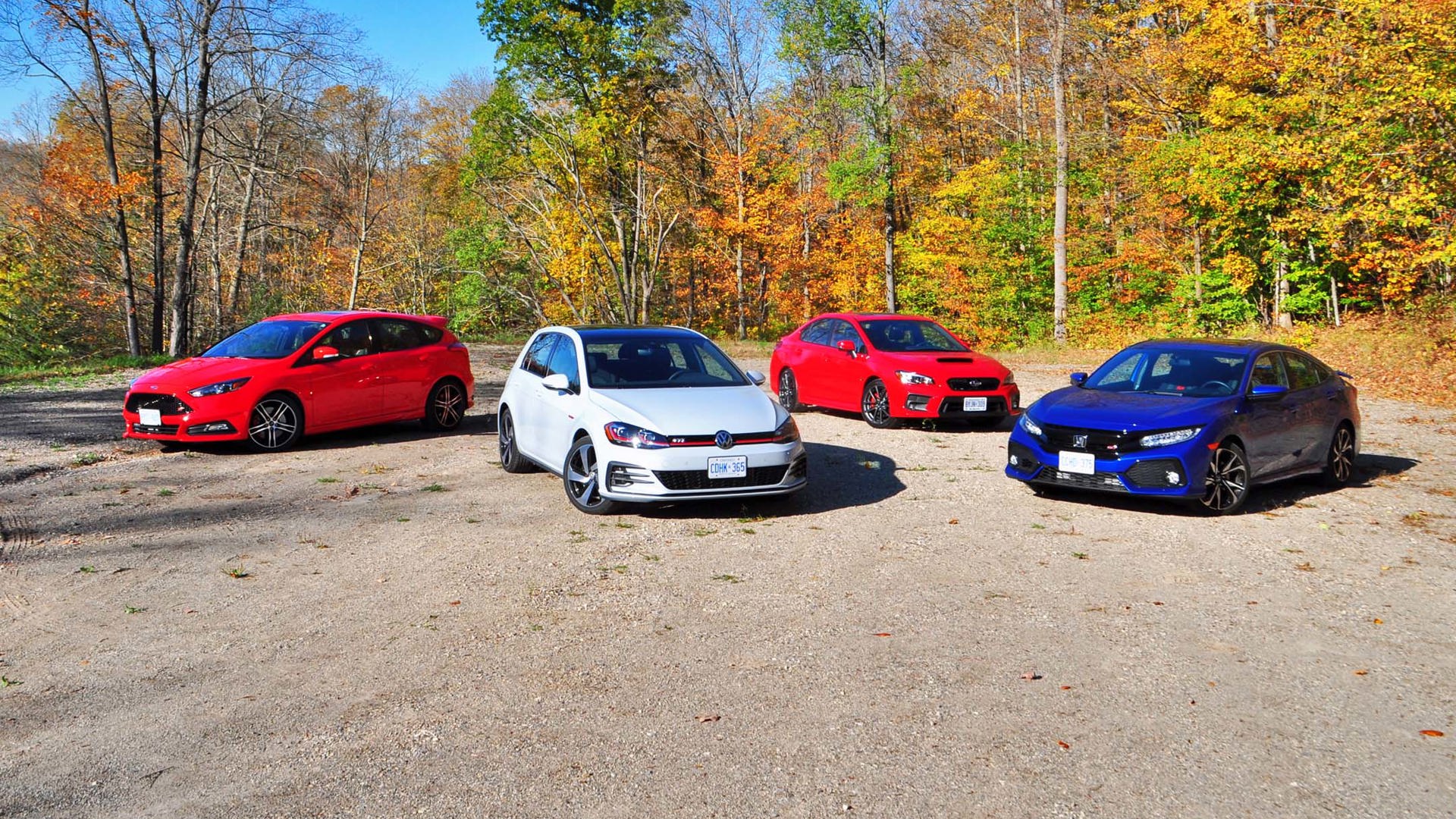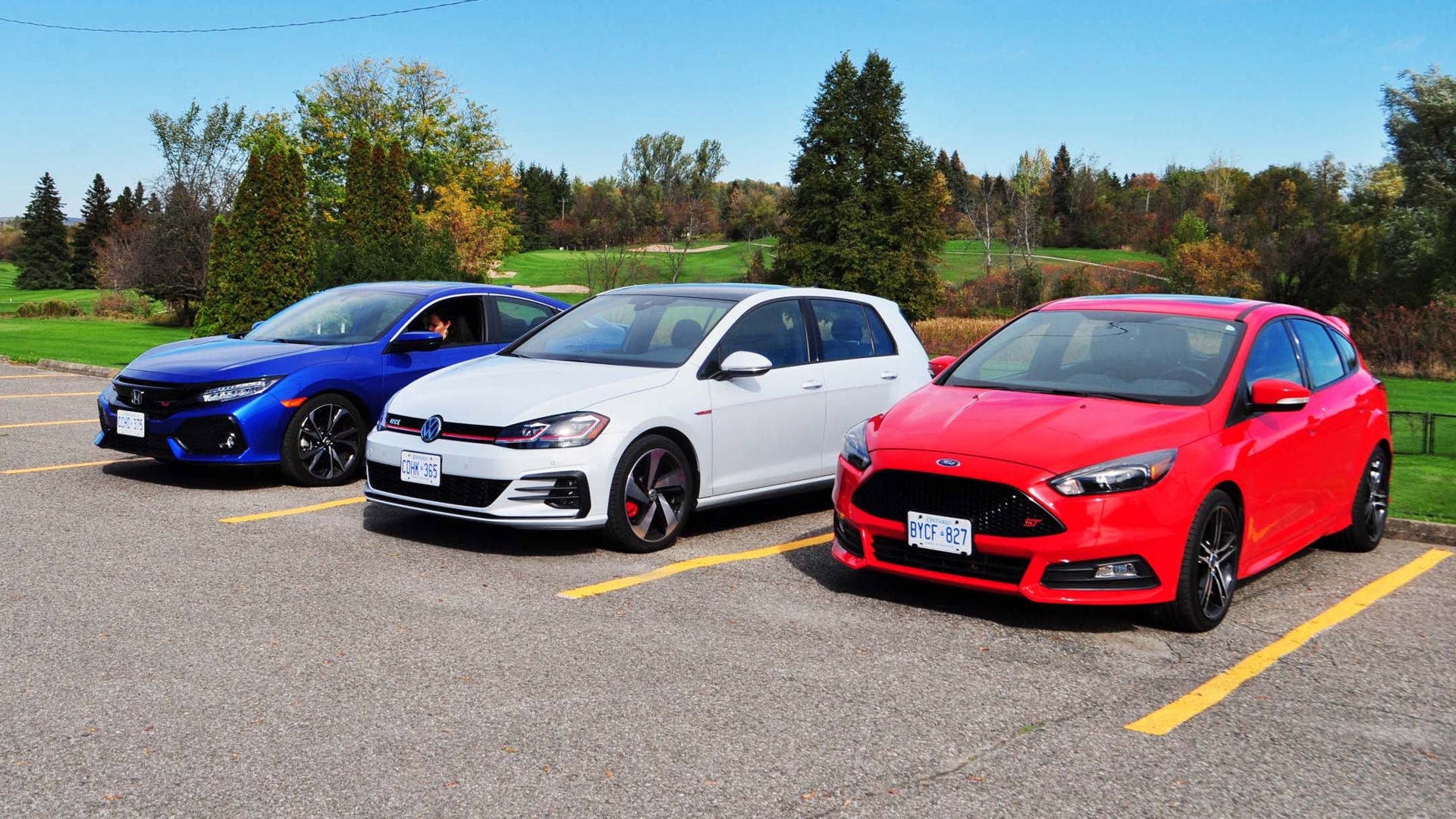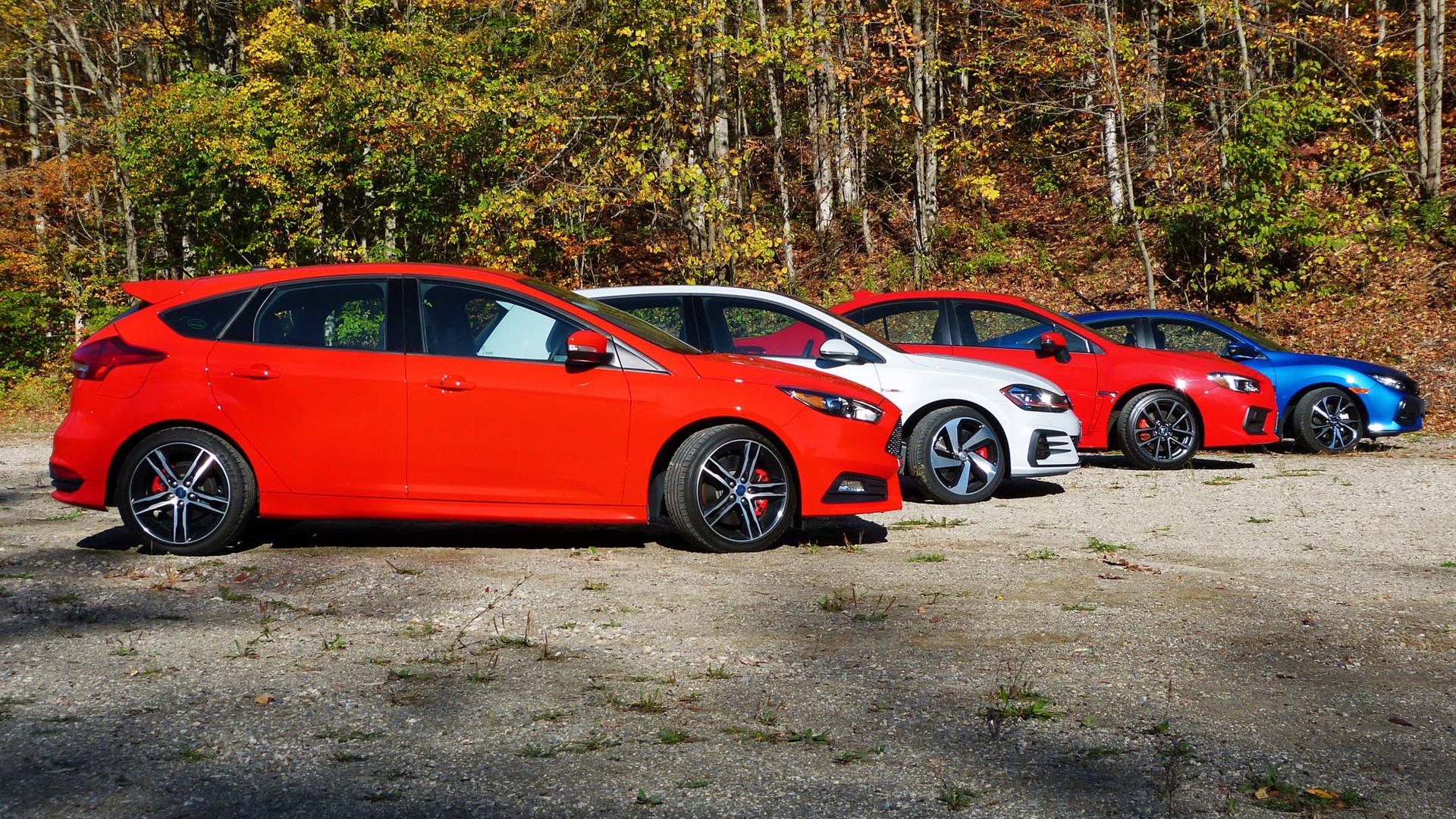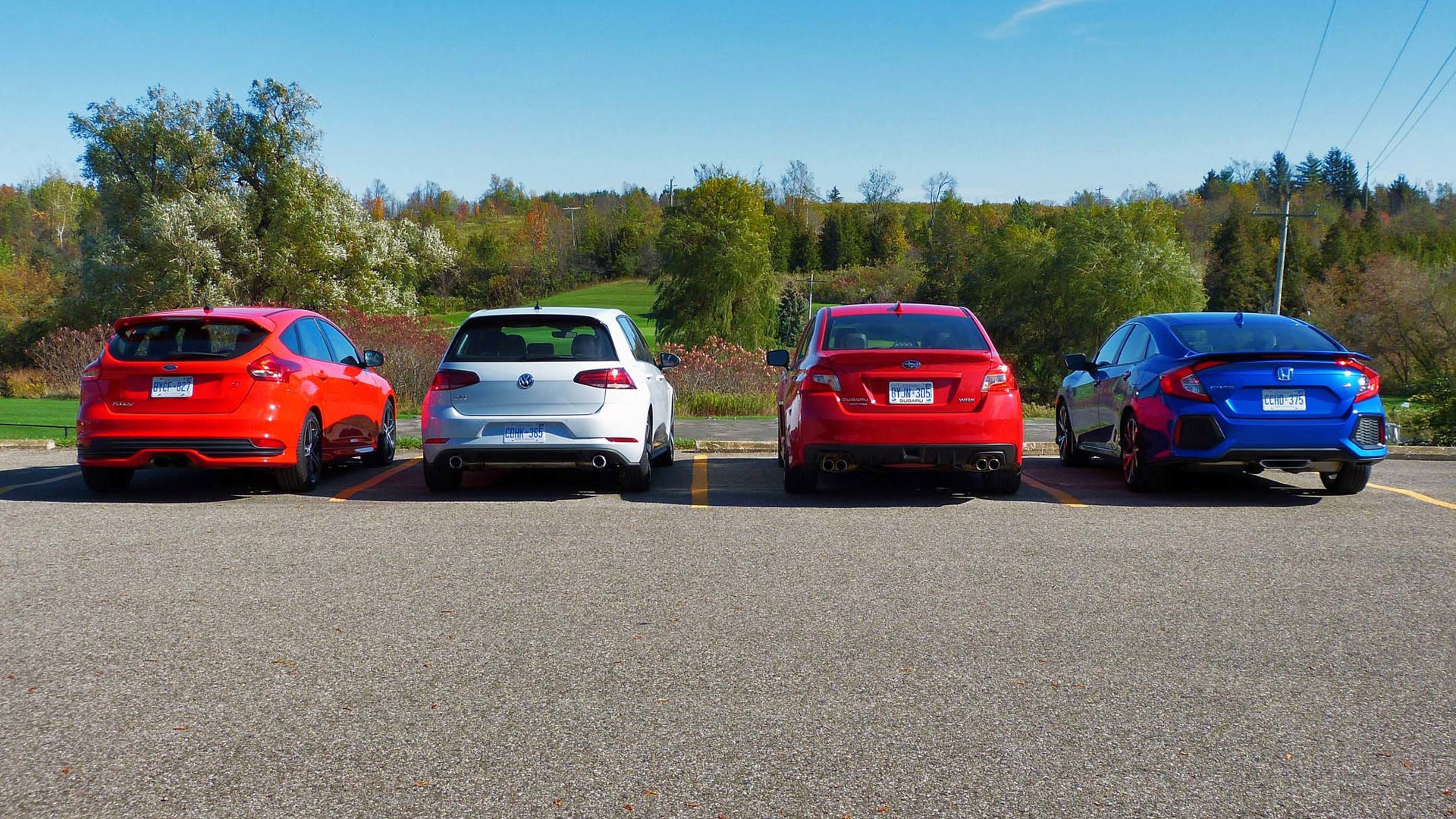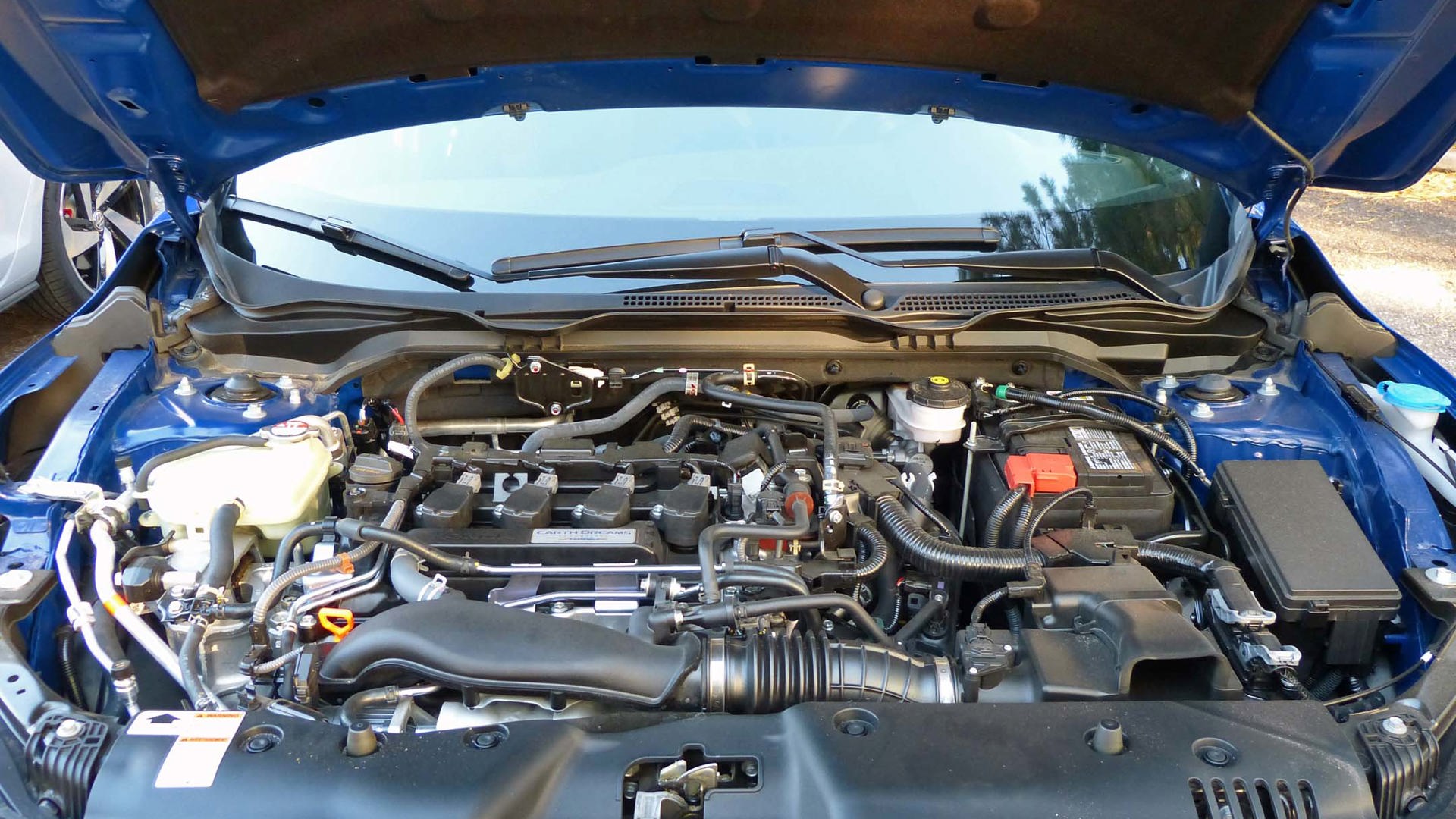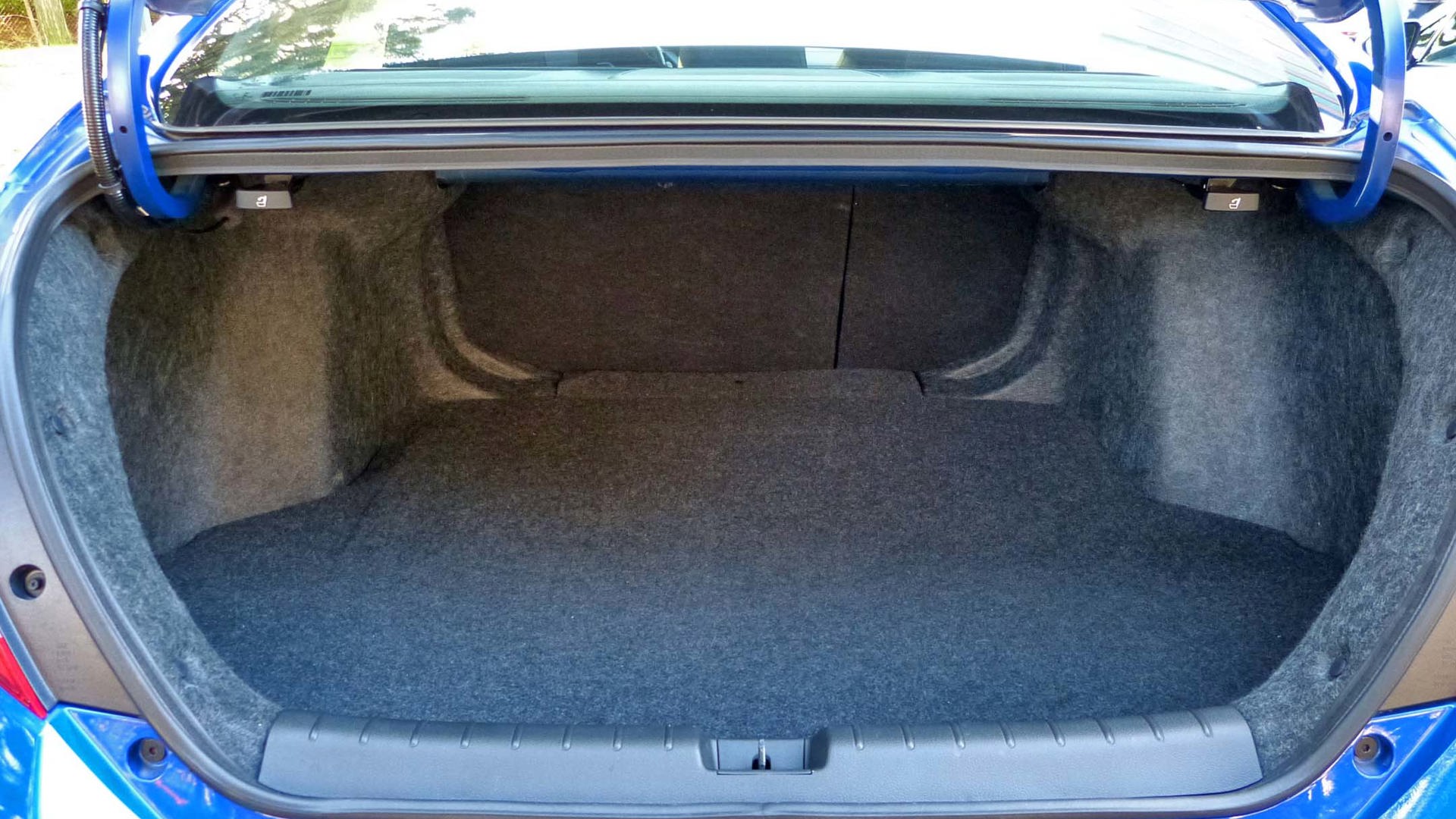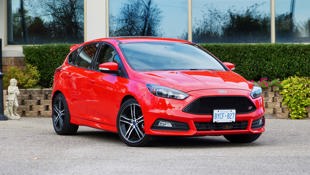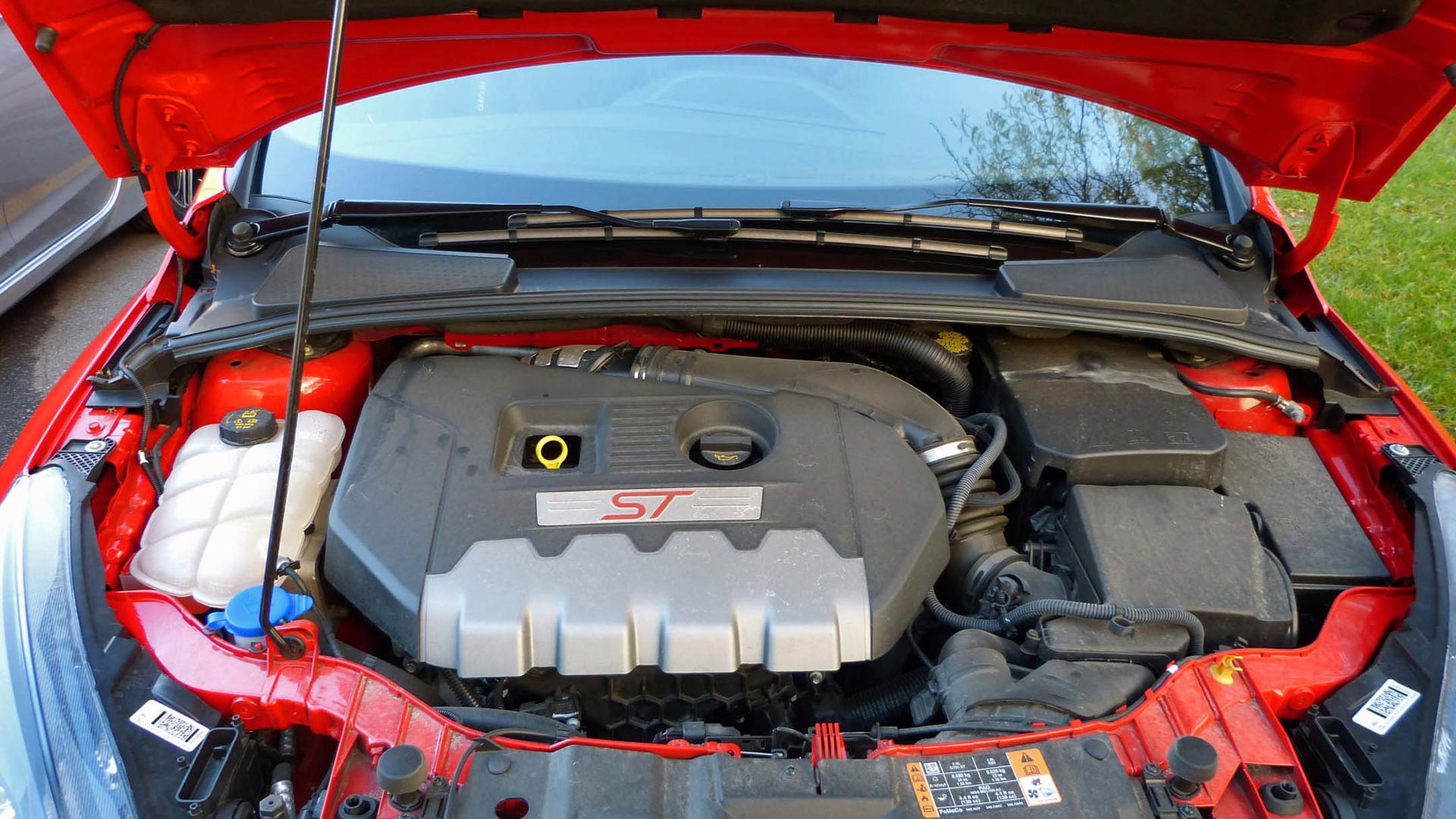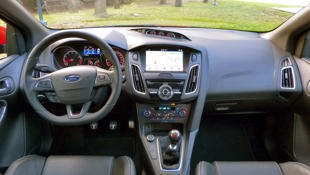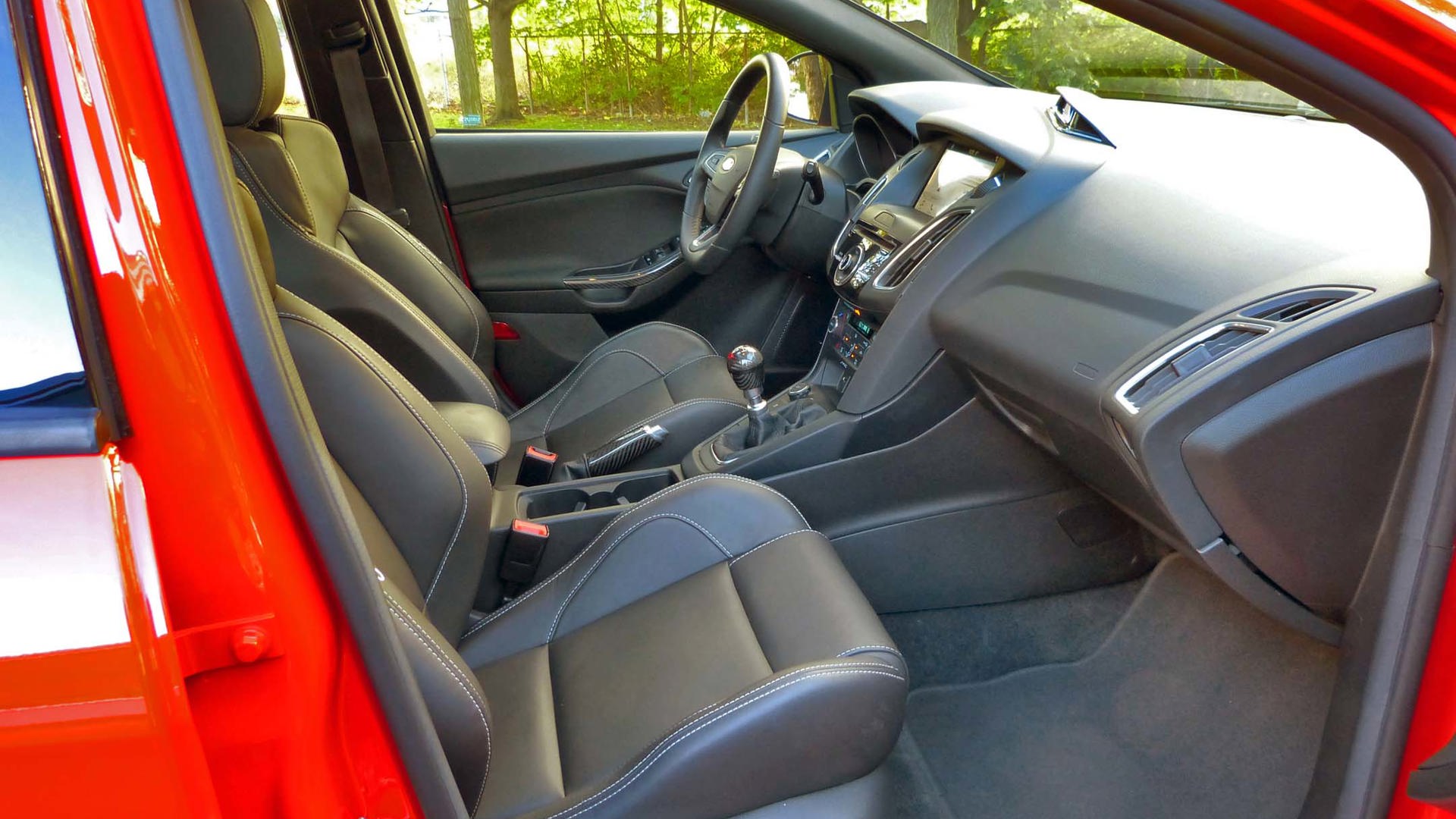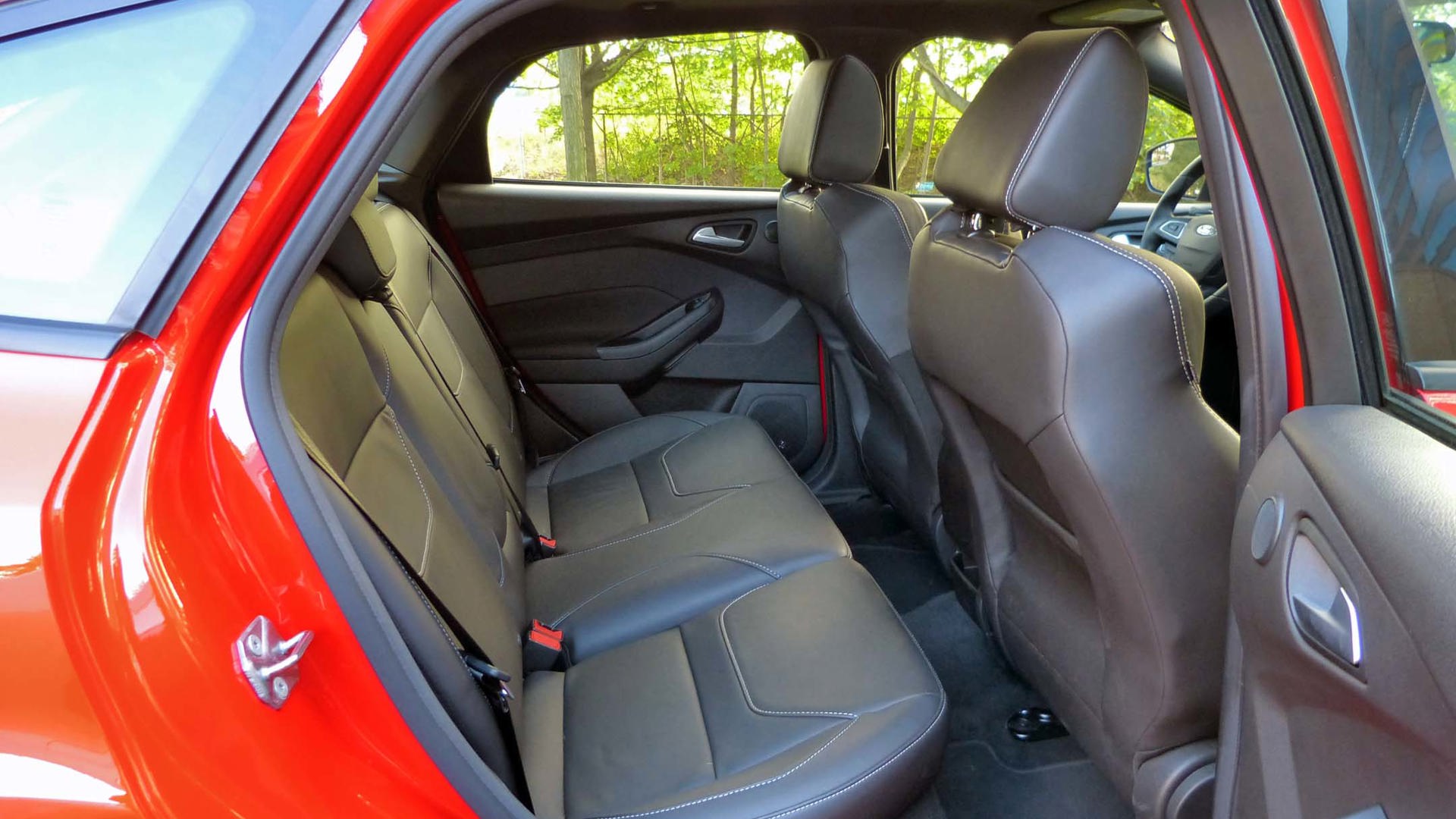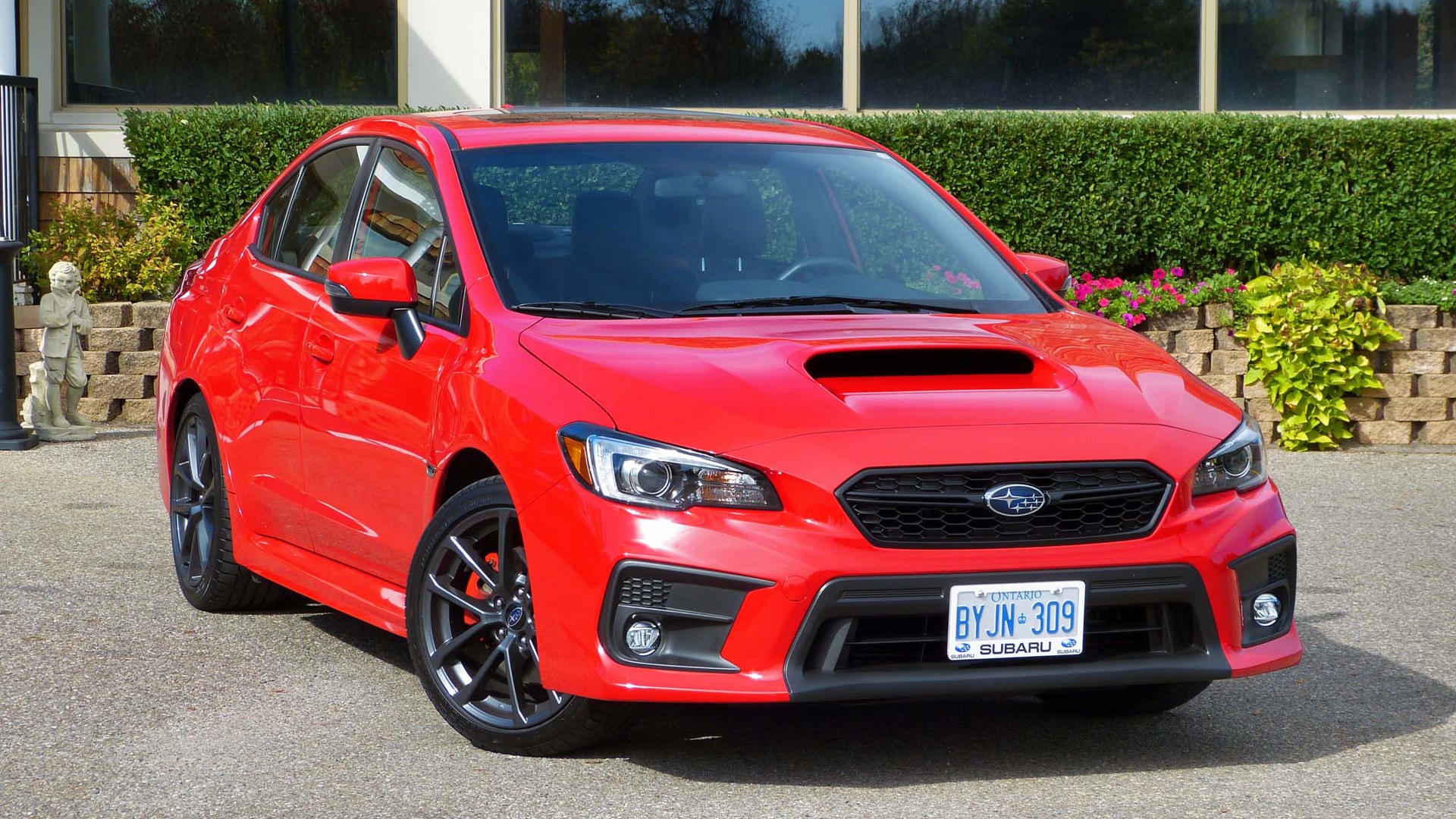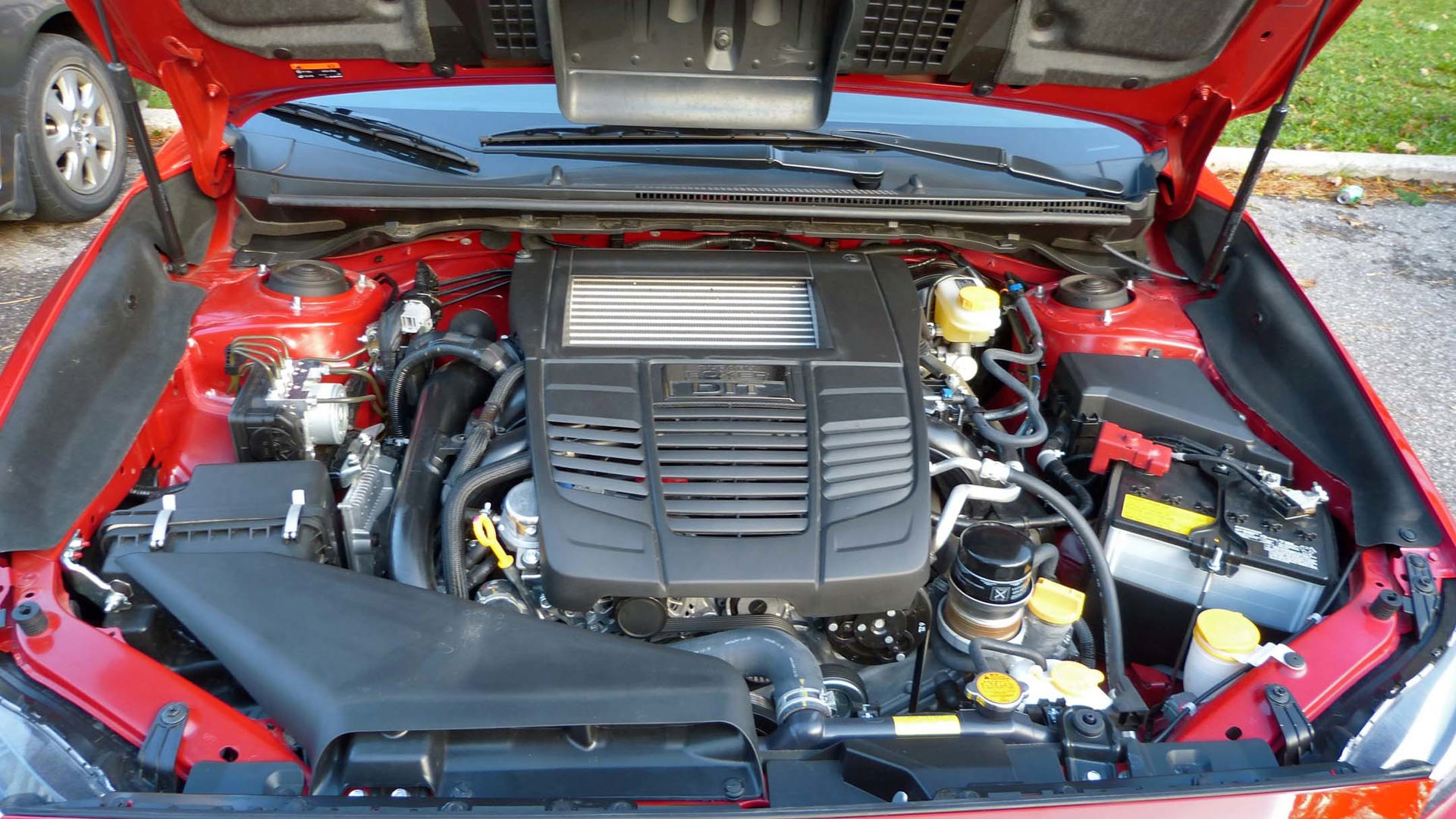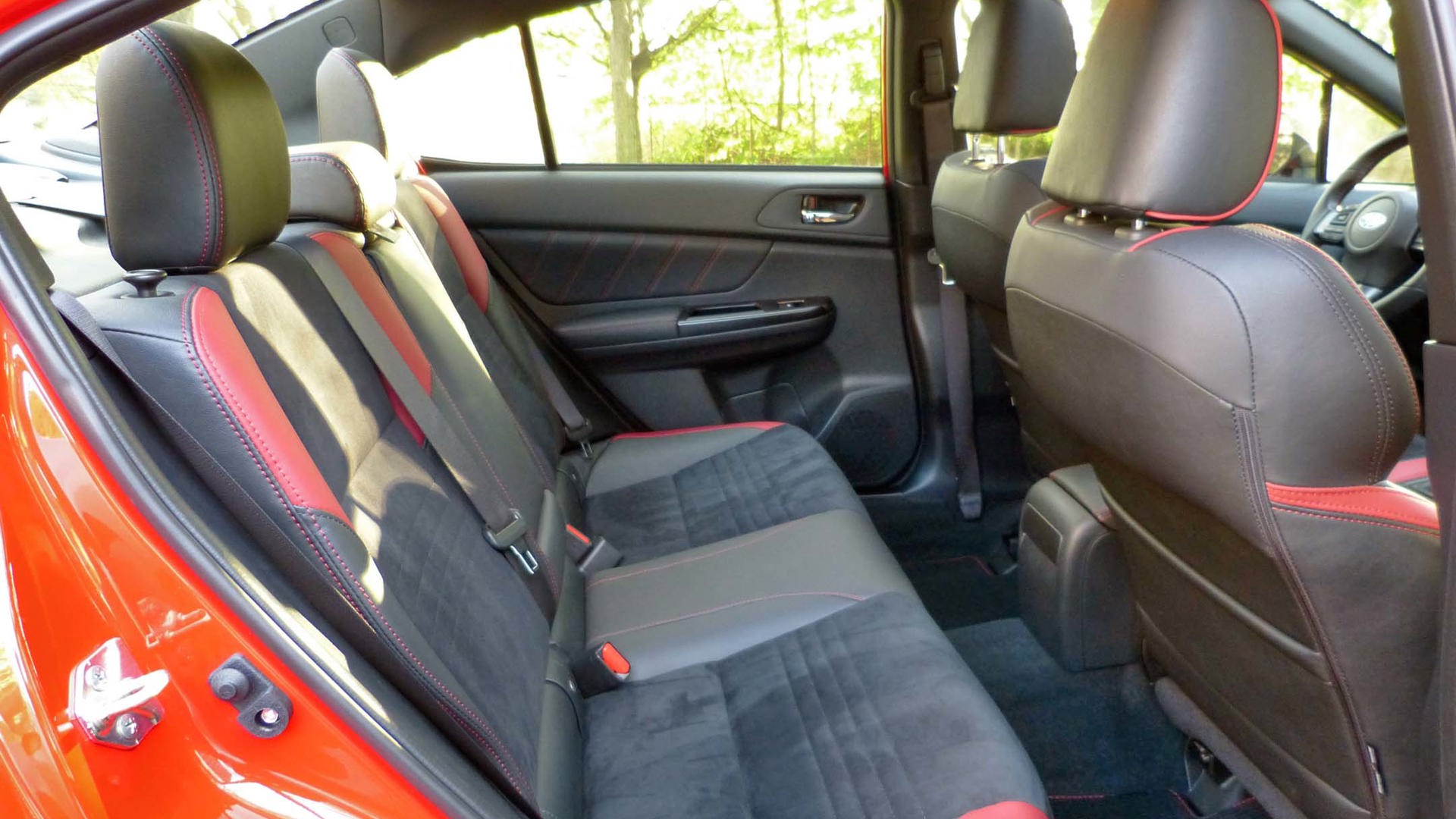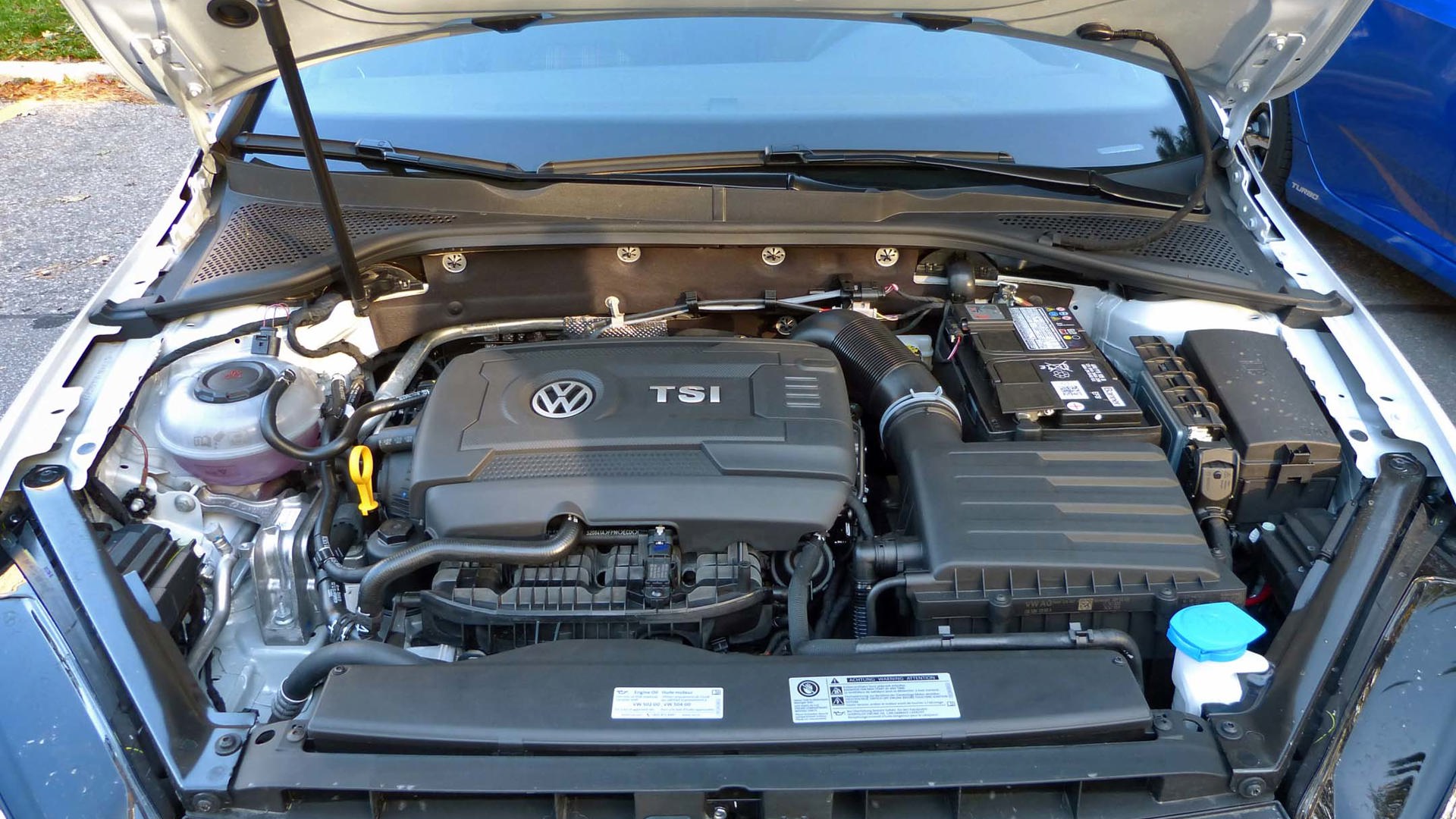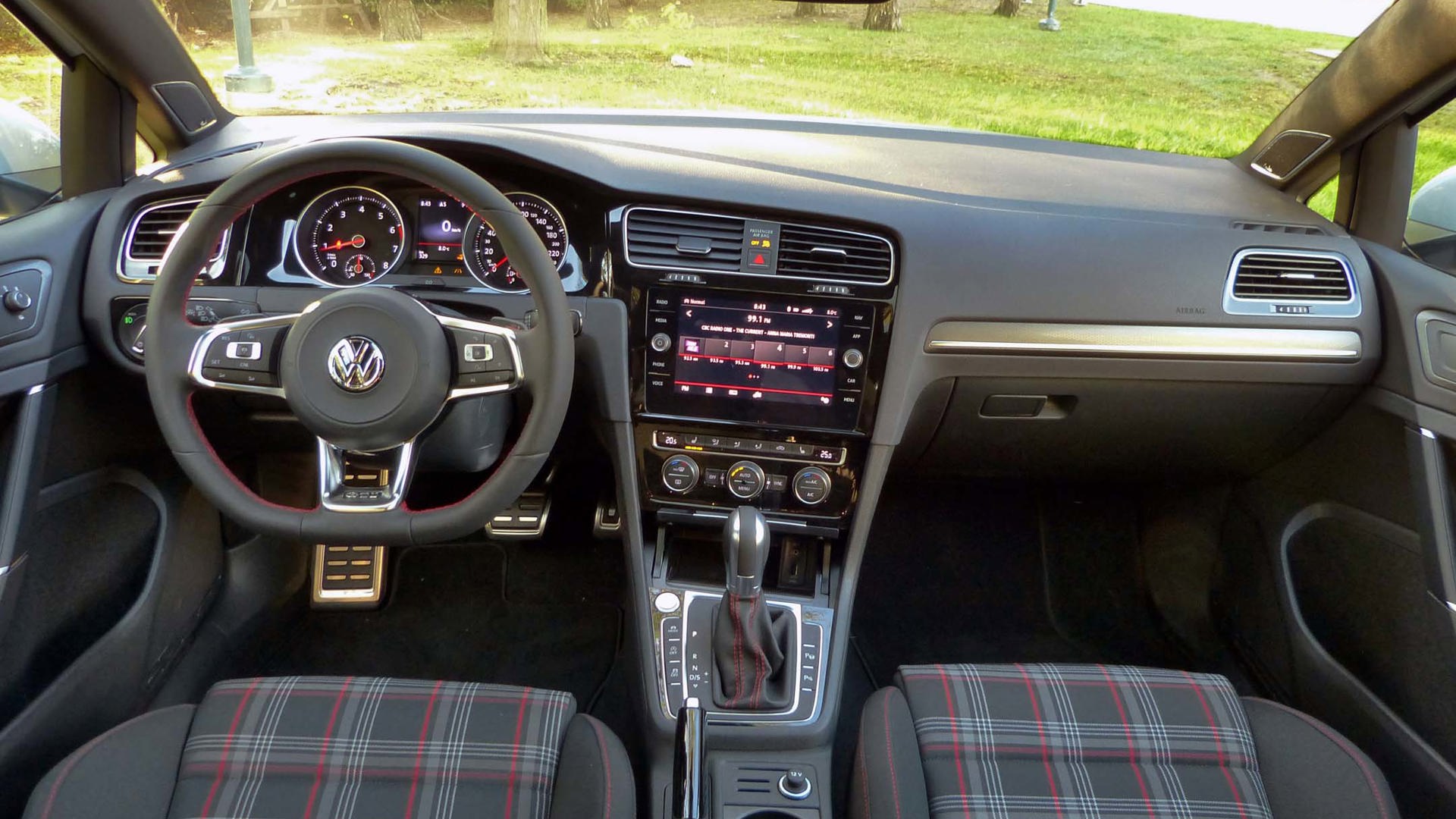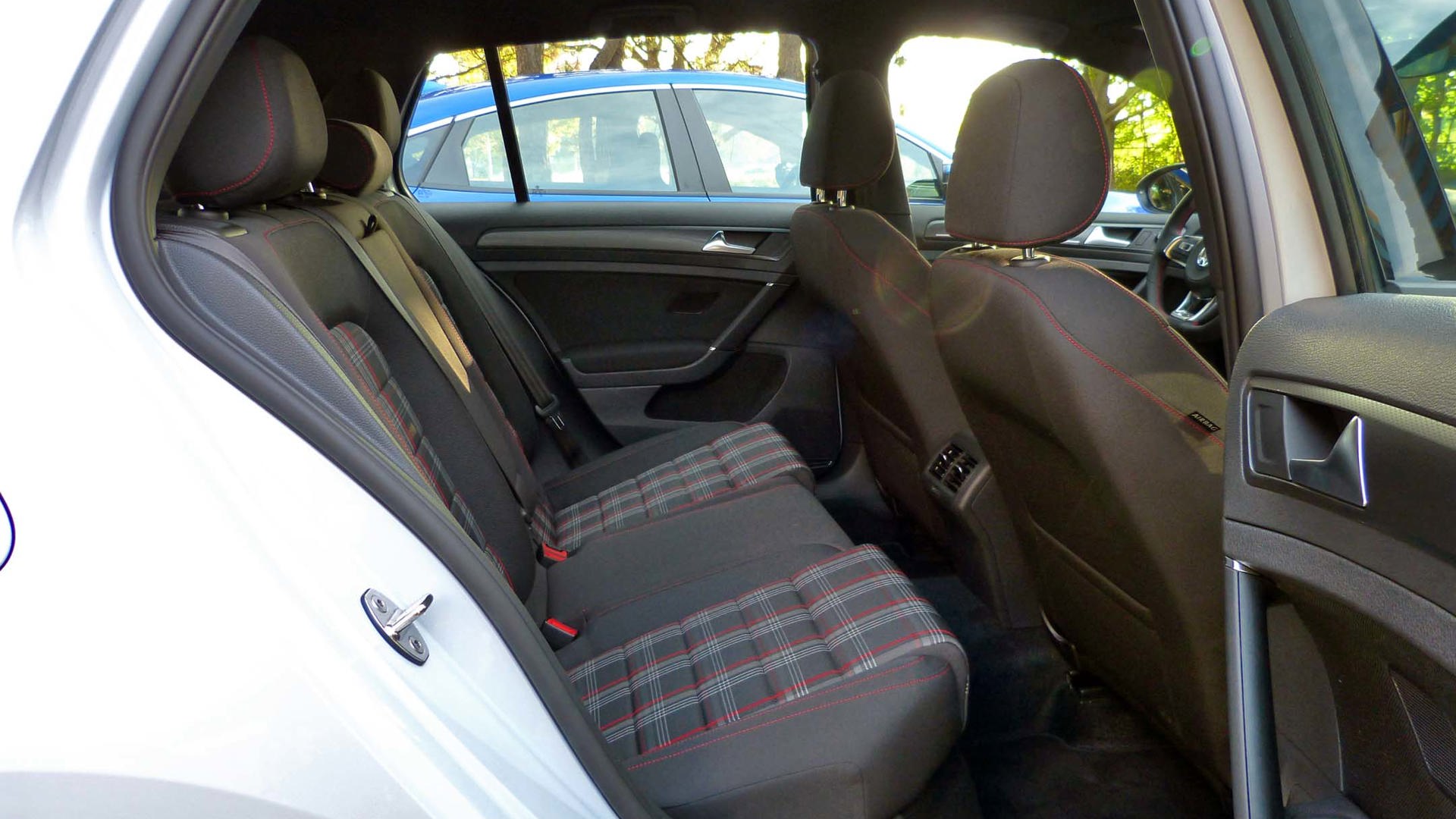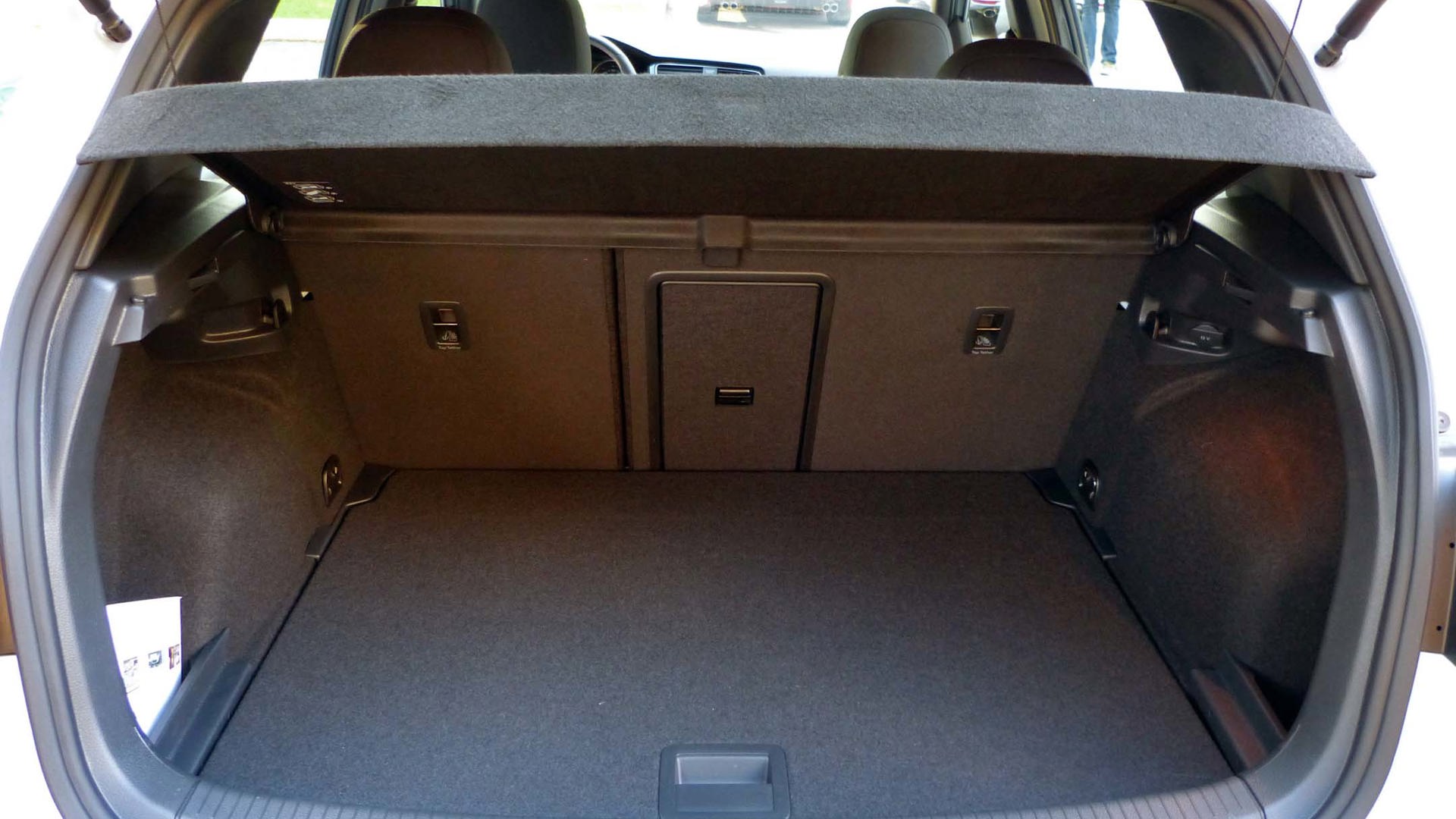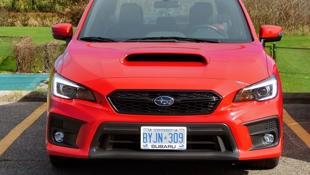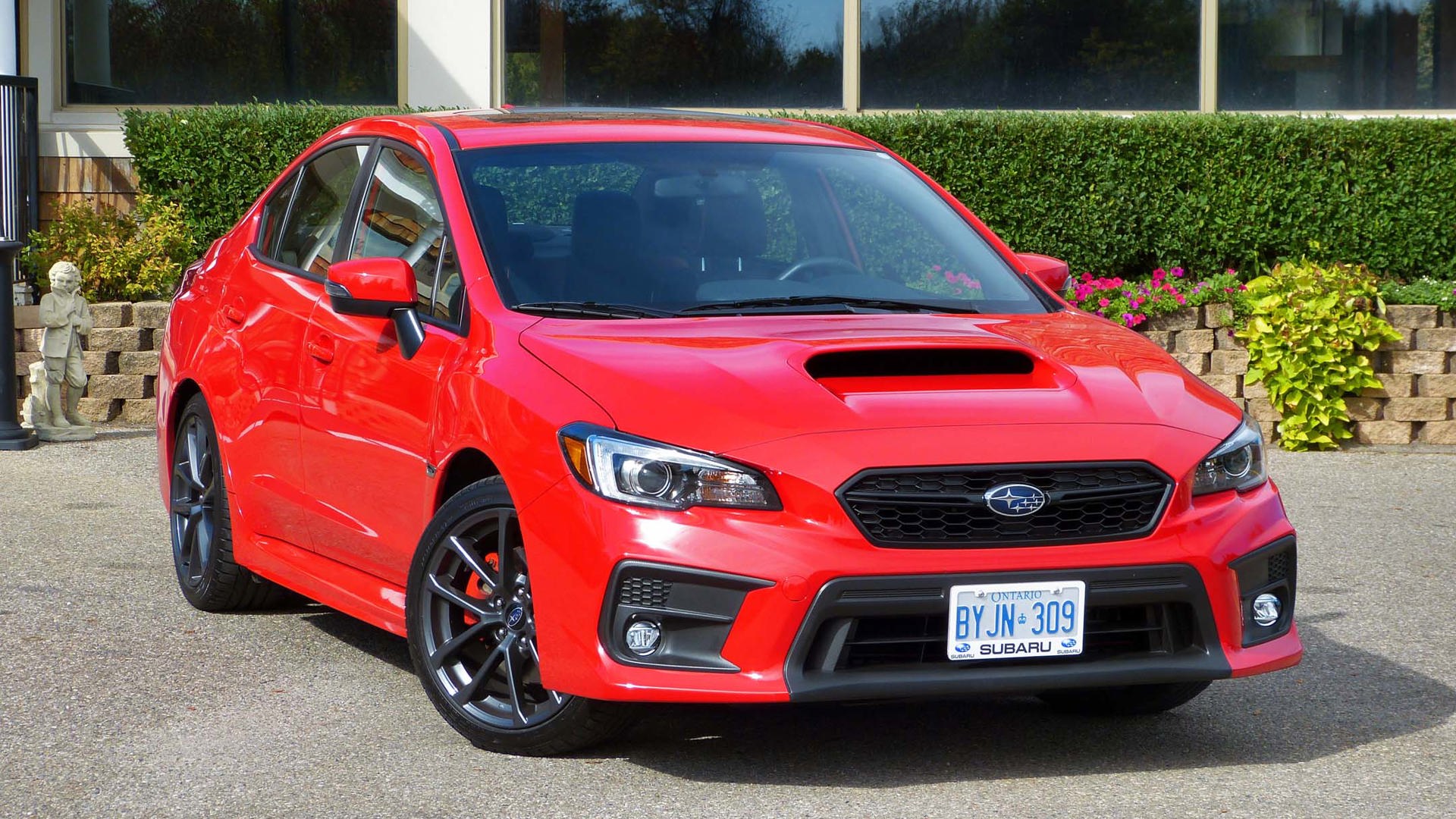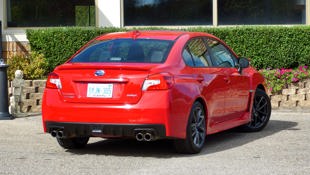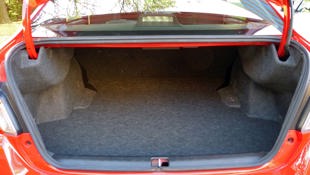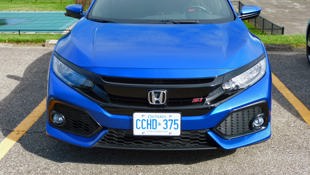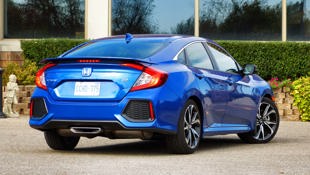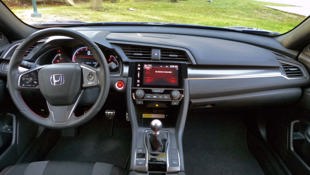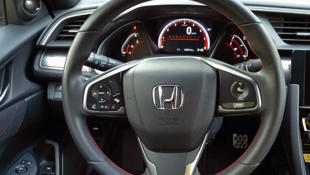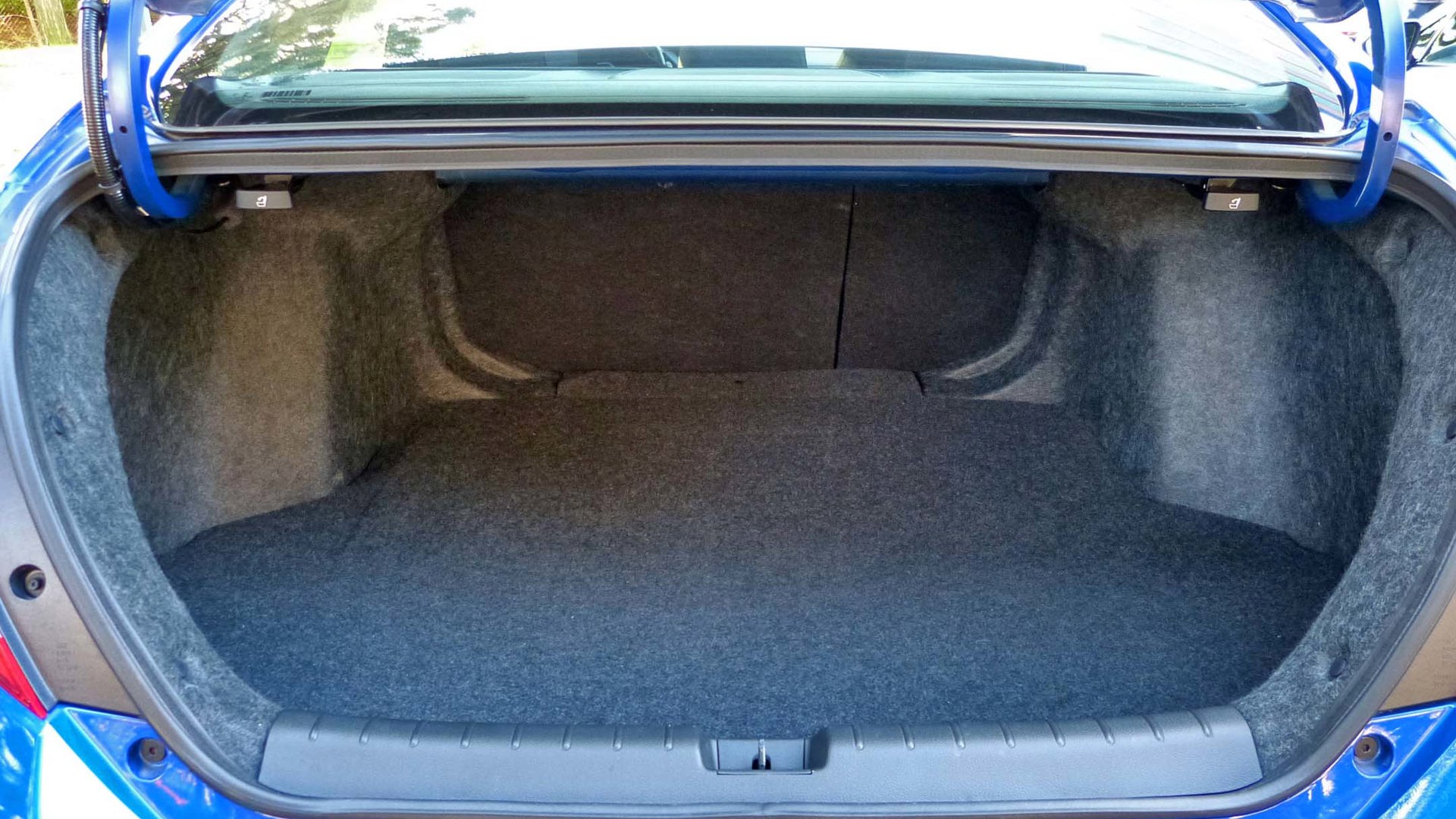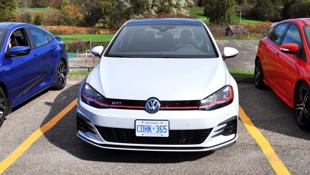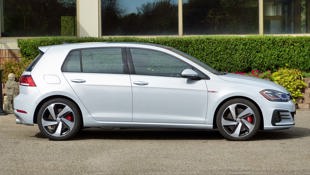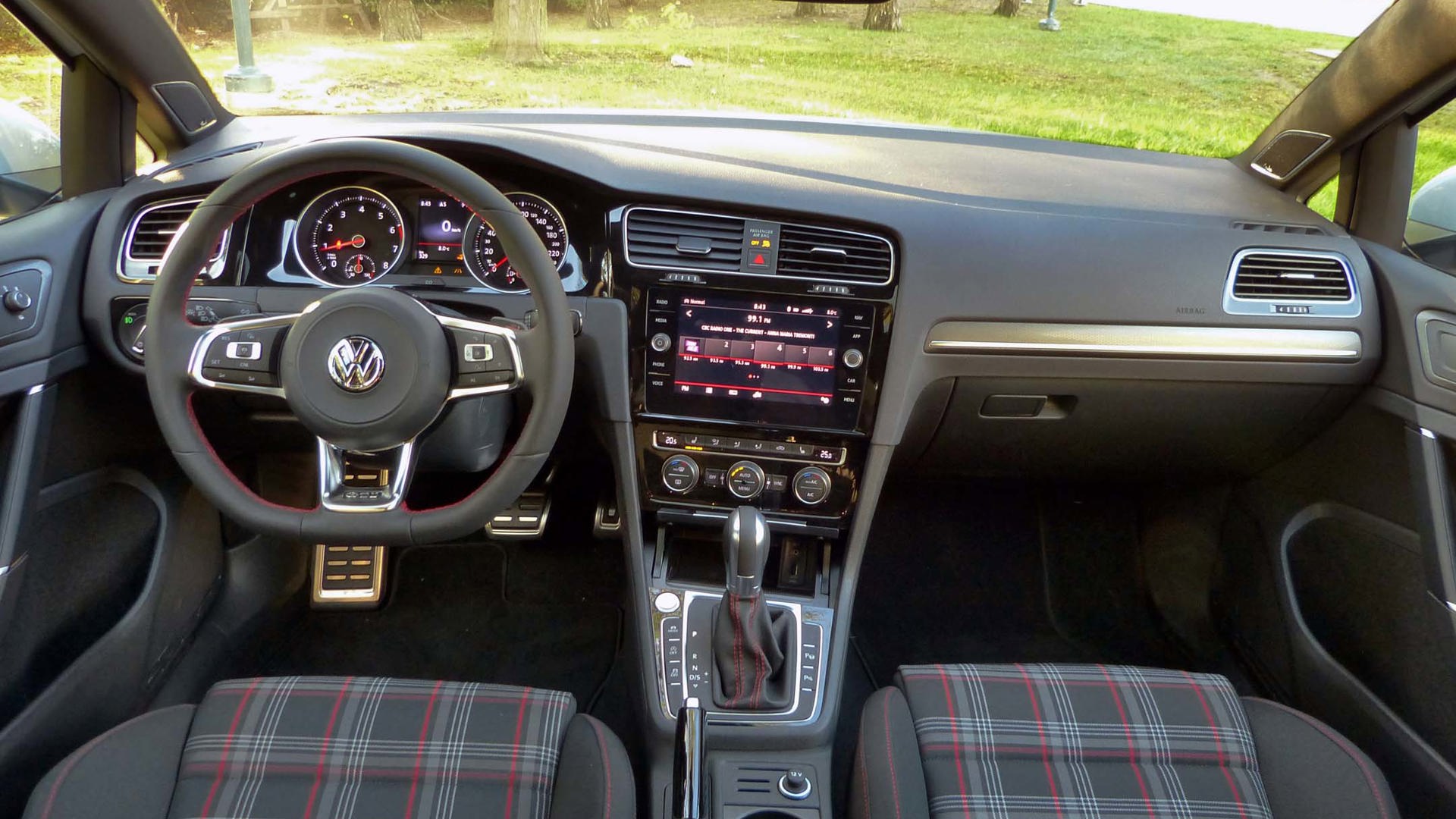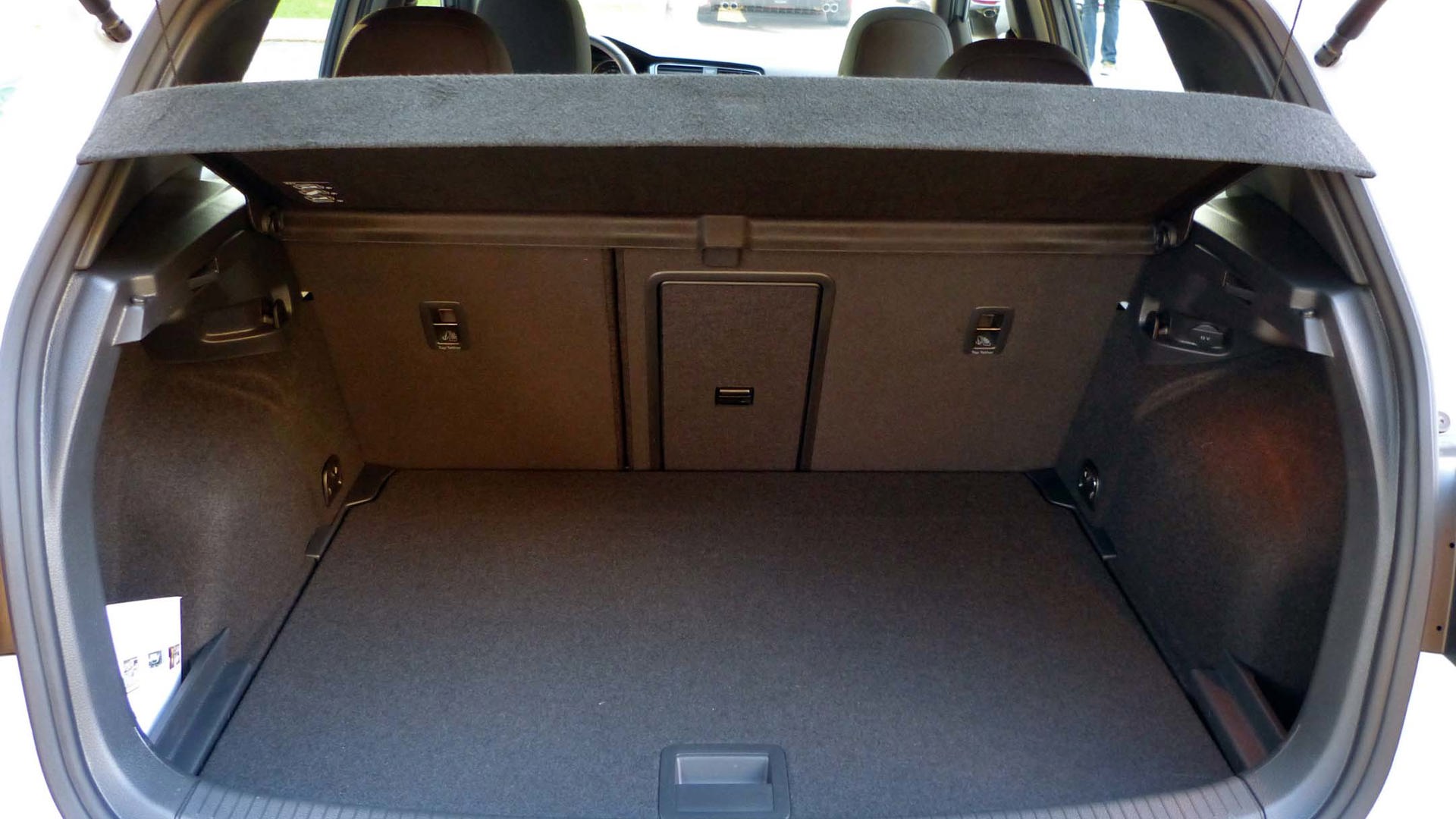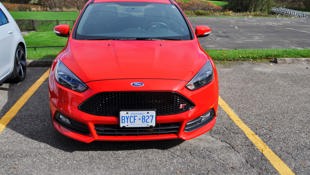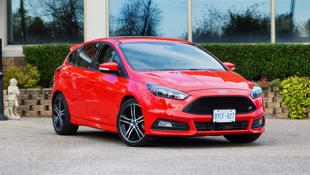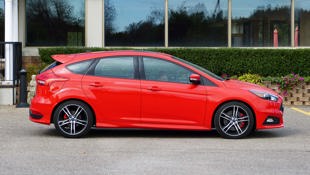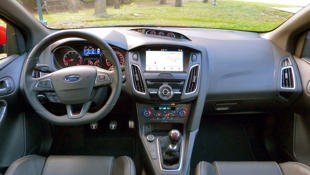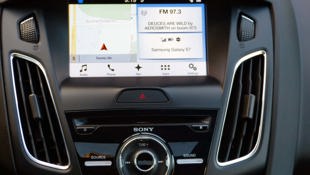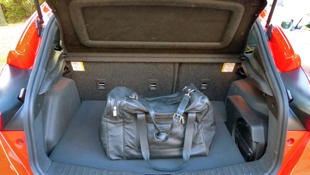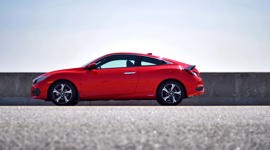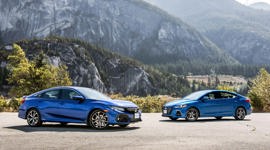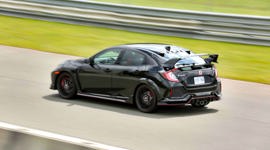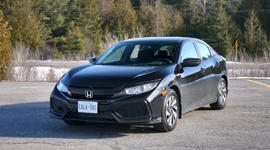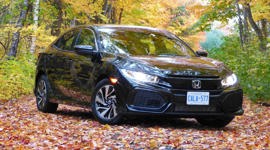Comparison Data
|
Base Price
$33,498
|
$28,490
|
$38,795
|
$37,295
|
|---|---|---|---|
|
A/C Tax
$100
|
$100
|
$100
|
$100
|
|
Destination Fee
$1,650
|
$1,595
|
$1,650
|
$1,645
|
|
Price as Tested
$36,648
|
$30,185
|
$40,545
|
$40,790
|
|
Optional Equipment
$1,400 – Voice-activated navigation $800; 18-inch machined Aluminum wheels $600
|
None
|
None
|
$1,750 – Driver Assistance Package $1,750; Clark Cloth Package $0
|
It’s hard not to love hot hatchbacks. Their combination of driving fun, daily practicality, and wallet-sympathetic fuel efficiency provides some eye-pleasing pavement paprika to vehicles that dominate the top 10 bestselling cars in the country list. So it should follow that the fieriest of hot compact funsters should be the most loveable of all – and judging by all the rabid go-fast coverage of the Honda Civic Type R, Ford Focus RS, Subaru WRX STI, and Volkswagen Golf R, there’s no doubt that these crazy-winged, maniacally turbocharged, range-topping compact fun machines capably stoke enthusiast hearts.
These little siblings to the latest sport compact powerhouses still offer much of the adrenaline appeal of its pricier big brothers, yet often more comfort, more visual maturity, better fuel economy and – for buyers who won’t take their car to a track – more overall value.
So it was very tempting to bring all these powerhouses together for one big, rubber-shredding drive-off. Yet as we found in our comparison of the Focus RS and WRX STI, and to a lesser extent in tests of the Civic Type R and Golf R as well, these top-of-the-line driving machines approach and can surpass the lofty $50,000 mark. Like the first frosty blast of winter, that biting cold financial reality hits hard: that’s a lot of dollars for cars that in their base trim all start under $20K, and are available in very limited numbers in these top, superhero performance trims.
Given that we’ve already compared and ranked seven of the bestselling hatchbacks in Canada in their mainstream versions earlier this year, this time we decided to gather up and judge the notable sport compact idols you see here: the Honda Civic Si sedan, the Ford Focus ST, the Subaru WRX, and the VW GTI. Many of these used to be the top performing compacts for their respective brands, and arguably each of these OEMs earned their tuner car street cred with these still-entertaining models. With more reasonable prices and available in much higher numbers, these little siblings to the latest sport compact powerhouses still offer much of the adrenaline appeal of its pricier big brothers, yet often more comfort, more visual maturity, better fuel economy and – for buyers who won’t take their car to a track – more overall value.
But which one provided the most driving fun and overall value amongst these spicy if not Carolina Reaper-spicy sport compacts? We rank them and detail why below.
Fourth Place: 2018 Subaru WRX Sport Tech – Michael Bettencourt
With by far the most horsepower and the only one to offer all-wheel drive of this foursome, you’d think the 2018 Subaru WRX would use its advanced drivetrain to metaphorically pound the others down into bloody performance submission. And if you’re planning any track fun with your daily driver, these two points may make all our other beefs with the Subaru WRX seem like mere latté-sipping niggles. “It’s amazing how much quicker it feels than the others,” said track-fan Lesley.
With 268 hp and a laggy but bombastic turbo boost from the 2.0-litre flat -four engine that kicks in like a carefully released rubber band, the WRX was the rowdiest of this particular group in attitude, power, and gravel-spewing handling prowess. “Boy-racer appeal abounds, and the WRX is a lot more nimble than its heft suggests,” says fellow editor Jacob “driftiness is godliness” Black.
It doesn’t have the tactile fluidity in the steering of the GTI, nor quite as much torque as the Focus ST, nor thankfully the torque steer prone tugs at the wheel of the Focus ST, but there’s an overall clarity in purpose, and that purpose is driving involvement, like it or not. “There’s a lot of noise; gnashing of gears, barking exhaust, tires thrumming,” said Lesley.
The manual transmission shifted quickly and smoothly enough, but the long clutch engagement made it difficult to maneuver at low speeds. This contrasted greatly with the super-short and high bite point of the manual Civic Si especially, where a toe crunch was enough to smoothly engage the next gear up or down. Try going down the gears quickly and smoothly on the track with a heel-and-toe downshift, and the large central tunnel that sends power continuously to the rear axle also unfortunately means there wasn’t much room to kink your driving foot over both pedals, and contributes to a tighter and less spacious feeling in the WRX overall.
And it’s those transmission points that downgraded the WRX’s overall Drivetrain Refinement score, where you’d figure its unique drivetrain would give it an edge. “It’s the only one with all-wheel drive, and that will mean a lot to a lot of people – for those folk, that fact alone means none of the others are worth looking at,” said Jacob.
From a styling standpoint, the WRX is the only sedan that looks like a sedan, with a rally-style “I’m a special Subaru” nose scoop, its aggressively squinting face, and large air intakes meaning serious F&F tuner-car business up front, but quickly quieting down that tone at the side and rear, with its small rear spoiler and generic three-box shape.
We now take a moment once again mourn the loss of a hatchback version of the WRX…. This loss of practicality is also – arguably – a styling loss as well, with the Subie coming in tied for last in exterior appeal with the fresher but more polarizing Civic Si sedan – which at least looks like a hatchback, but isn’t.
Stepping inside is where the second-highest $40,445 asking price and the prior-generation Impreza interior and platform collide. Sadly, the WRX has not benefitted from the considerably upgraded materials and modern infotainment system of the new generation, which debuted last fall in the regular 2017 Impreza, and also offers Apple CarPlay and Android Auto. Though the base WRX starts at just under $30K, our WRX Sport-tech with optional RS package rings in at $38,795, which becomes $40,445 after freight and PDI. We’re not saying a base $20K Impreza has a nicer interior than a refreshed but not totally redesigned ’18 WRX, but the cheaper model is notably roomier and quieter inside, while at least offering those phone-friendly infotainment systems to their drivers.
“We were speculating between test drives about how great this car would be on Subaru’s new platform,” said Stephanie Wallcraft, a common theme when debating this car’s visceral appeal versus its attitude toward everyday commuting.
The WRX perhaps unsurprisingly ended up being much thirstier than all the others, with an overall 10.0 L/100 km official overall. Our test had it at 12.0 L/100 km – more than four litres worse than the Civic Si.
Add it all up, and the 2018 Subaru WRX is a great sporting compact, but not a great compact commuter, and its appeal varies based on where your priorities land on the comfort versus combat spectrum. “It gets bonus points, and some concession for its higher price, by having all-wheel drive, but in this case that wasn’t enough to redeem it,” concluded Stephanie.
Third Place: 2017 Honda Civic Si Sedan – Lesley Wimbush
Sitting above the entry-level sedan and below the sizzling Type R, the Civic Si is the perfect Goldilocks car. Not too hot, and not too cold, the Si comes close to being “just right”. But close only counts in horseshoes and hand grenades – in our comparison tests it can mean the difference between winners and also-rans.
It’s available in just one flavour, order an Si and it comes fully loaded – but there are no available options.
The list of standard features includes: 7.0-inch touchscreen with back-up camera and navigation, Apple CarPlay and Android Auto, Honda Lanewatch, 452-watt 10-speaker audio system, leather-wrapped wheel, heated front seats, LED headlights, sunroof, 18-inch alloys and the Si appearance package. But it’s not available with the HondaSense safety system which features adaptive cruise control, lane-departure warning, and blind-spot monitoring.
The tenth-generation Civic’s appearance is rather subjective – to me it looks as though it’s been hacked and slashed with a butcher knife, but at least no one’s accusing it of being boring anymore. Editor Michael said he “started out not a fan of the look. After driving it, the look started to grow on me, and there’s certainly a worthy fun factor there.” Evidently, the jury was out, because of the four cars tested, it scored lowest for design.
The interior fared a little better, ranking mid-pack for styling and placing second for quality. Highly bolstered Recaro-esque sports seats with red stitching and Si badging not only look the part, they have the grip needed to keep you in place when the g-forces get strong in the twisties. But there are a couple of niggling ergonomic foibles that were irksome enough for it to come third in usability.
The infotainment system is almost universally loathed, particularly so for lacking an actual volume knob. That’s been addressed in the new Accord, let’s hope it trickles down to the Civic.
But the most egregious omission in a sporty compact is a proper handbrake. Instead we had to make do with an electronic button to keep the Si from rolling away – not to mention the kill-joy affect it would have on J-turns and the Scandinavian flick. Editor Jacob found this most offensive: “Dear electric parking brake – you suck. Love Jacob.
“Seriously, even putting the Si into gear isn’t enough to hold it on a hill, which is ridiculous. Instead you have to depress the finicky button and look for the tiny, hidden little light each time you get in and out, or risk a runaway Civic. In a sea of bad ergonomics, this misstep is Honda’s worst.”
The Focus ST and Golf GTI, being hatchbacks, came out on top for cargo space. But the Civic Si was the hands-down winner for overall passenger volume with 2,690 litres total.
This is such an easy car to drive. Compared to the stiff bite of many hot compacts, the Civic Si’s clutch take-up is on the light side – which makes it really forgiving and difficult to stall. “Honda’s gear shift is perfectly located, weighted just right, and is just the right, cute little size,” said Jacob. “The clutch pedal is intuitive and effortless. It’s a joy to shift gears in this car, and the engine, while low on paper compared to this lot, is a hidden gem.” Michael wasn’t so impressed with either its power or its handling: “The Si was the boisterous young backwards-hat wearer of the group, trying hard to be cool with its big wing, large air intakes, and fog lights up front, but without the power or handling chops to quite back up the aggressive looks.”
With 205 hp/192 lb-ft of torque, the Honda’s turbocharged four is the least powerful of the bunch, but it’s more refined than the raucous boxer of the 268 hp Subaru WRX. It’s also the lightest of our group and therefore felt quicker than it was.
An impressively stiff chassis, bigger sway bars, multivalve adaptive dampers, and a limited slip differential in front helped deliver a nimble, gamboling handling quality through tight off-camber turns. Steering is a little on the light side but it’s quick and accurate, and the leather-wrapped wheel feels comfortable in your hands.
The Si was our undisputed champion of fuel consumption – producing a miserly 7.8 L/100 km compared to the Subaru’s 12.0 L/100 km after a day flogging the hilly roads of Caledon.
When it came to pricing, the Civic Si was far and away our winner. At $30,185, it was more than $6,000 cheaper than the nearest-priced Focus ST and more than $10,000 less than either the Golf GTI or the WRX. As Stephanie noted, “The fact that it has the lowest price by far, along with the best fuel economy and a surprisingly stout feature list could have been enough to push the Civic Si higher up the list were it more attractive.”
The Civic Si ticks a lot of the right boxes – and with a few adjustments to some minor, yet annoying flaws, it could be “just right”.
Second Place: 2018 Volkswagen Golf GTI – Jacob Black
The simple fact of the matter is this: the 2018 Volkswagen Golf GTI is very much an excellent car. It hits its marks so cleanly, and so consistently, that its adoring fans will have the upper hand in any argument. On paper, and at first glance, this is the car to get in this crop. It’s the benchmark. Going in, I fully expected it to win.
So why then, did we rank it second? Because we did, albeit by a tiny margin. Just two percentage points in fact. So where did those points go missing?
In a world of ever more refined vehicles, the Golf GTI represents staid competence. Its quiet confidence is well deserved – but in this class, we’re looking for something more. Michael said it well, when he described the 2.0L turbo as “by far the smoothest and most refined of the lot.”
The punchy VW lump pulls with endearing authority. “While the turbocharged four’s 210 hp output doesn’t sound like much, especially when compared to the Focus ST’s 252, there’s 258 lb-ft of torque available from 1,600 to 4,200 rpm. The abundance of torque in such a small car makes it delightfully responsive,” explained Lesley.
But we all agreed the GTI lacks the intake noise and exhaust snarl of the Subaru or Focus ST. While those two deliver more potency with a side of emotion, the GTI is the quiet achiever. In short, it fails to tug on the heartstring.
Perhaps the fact that this was the only dual-clutch transmission among a crop of manuals hurt the GTI, and Lesley believes a three-pedal GTI would have made the race even closer.
That assertion is backed by Stephanie, who notes: “The steering and handling go together nicely, but the transmission in this one sucked nearly all of the fun out of it for me.”
Handling came in for deserved praise from all comers: “Its steering feels damped yet super quick, its front-wheel drive handling helped by an available limited-slip differential that made the car as fun and rewarding as the others to drive, if not more,” cooed Michael.
Yet while the Golf was an easy victor in the Ride Comfort scores, it could manage only third in the handling department. Composure – yes. Entertainment? Not so much. The Golf is like a well-trained dancer, stepping precisely and fluidly in exactly the right way; but we’re looking for a big dirty Paul Mercurio knee slide across the floor.
From a value proposition too, the Golf lost ground to the Focus. Sure, it had lane-keep assist and adaptive cruise control – two more reasons it scored well in “ease of driving” – but a lack of heated steering wheel, and semi-manual front seat, in the most expensive car of our comparo was a bitter pill to swallow.
Where the GTI clawed back ground was in quality, fuel economy, and infotainment. Of the quartet, the VW infotainment system is a standout, with easy to use hard buttons, plus a vivid, well-executed touchscreen. It scored points for ease of driving, and performed well in every measure of practicality.
We’re not saying the Golf is not entertaining, goodness knows it is – just that back-to-back with the sizzling steering of the Si, or the fantastic frolicking Focus, the GTI feels tame. I would almost guarantee the GTI to be quicker in the hands of most people on any given racetrack, but our focus here is grin-factor, and the GTI is outpointed in that regard by our winner.
From a pure livability perspective, the Golf is a hands-down winner, it just doesn’t ignite passion the way the ST does.
First Place: 2018 Ford Focus ST – Stephanie Wallcraft
The competition between these four cars is as tight as it is between the owners who take them to their local autocross events. But in our view, the Ford Focus ST is the choice that delivers the perfect balance of driving entertainment, everyday usability, and feature list versus price.
The Focus ST’s raw horsepower figures aren’t the highest in this group. Its 2.0L turbocharged four-cylinder engine hits its peak of 252 horsepower at 5,500 rpm, while the highest performer here, the WRX, gets to 268 hp at roughly the same point.
However, the Focus ST delivers the highest torque at 270 lb-ft and hits its sweet spot at 2,500 rpm. As soon as it gets there it’s off like a rocket, delivering a spirited feel under the right pedal right from first gear.
I especially enjoyed the Focus ST’s shifting action. With the six-speed manual transmission’s well-defined shift gates, I never doubted a single shift, either up or down, and dancing with the pedals quickly became second nature. It didn’t even annoy me when I became stuck in traffic. People say that the stop-and-go conditions of urban centres are what’s killing manuals, but I found this one to be exceptionally liveable.
To be fair, we weren’t all as enamoured. Lesley was less impressed.
“This could be personal preference,” she says. “The clutch pedal felt awkward compared to the others, and downshifting smoothly required more effort and forethought.”
But throw in some go-kart-style steering and handling characteristics, and the Focus ST becomes pure, unadulterated fun.
“It wags its tail with glee, and it’s the only one of the four I could consistently and confidently steer with the pedals,” Jacob says. “Transferring weight fore and aft and using that weight to help steer and balance the ST is where it really shines. It’s agile and rips into corners with the excitement of a puppy.”
“It’s loud and brash but has the goods to back it up,” Lesley agreed. “The steering is sharp and direct, and the throttle is responsive. Terrific handling, though not as quietly competent as the GTI.”
Another stand-out aspect of this car is that it fully looks the performance part inside and out, from the spunky and sizeable roof-mounted spoiler above the hatch to the Recaro sport seats.
“The seats are highly supportive and hold you in a velvet clutch – a nice change for those of us who generally slide around through the corners on flatter seats,” Lesley says.
And the list of features in the Focus ST doesn’t stop there – those great seats are fully power-adjustable, a standout in this field for the $36,648 price tag; it’s the only one here with a heated steering wheel; and the Sync 3 infotainment system is user-friendly and includes compatibility for both Android Auto and Apple CarPlay.
“It seemed the most fully loaded upon opening the door,” Michael says. “Even the high-end Sony stereo and full-size spare tire further the impression that the Focus offers a lot of value for its as-tested price.”
We found a few points to nitpick at, of course. Michael commented that the Golf GTI is flatter and more polished in comparison. Jacob found the centre stack layout to be unattractive and bulky. There’s a small compartment with a USB port designed for stowing a phone while driving, but my Samsung Galaxy S7 is tall enough that it doesn’t fit well there and I knock my fingers on it while shifting. And its fuel economy is acceptable but not exceptional – coming in third of the four in this comparo.
But if driving entertainment is your top priority, then all four of us agree: from this group, the Focus ST is the standout.
